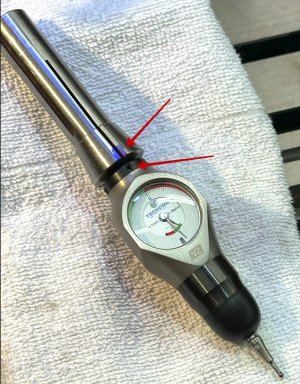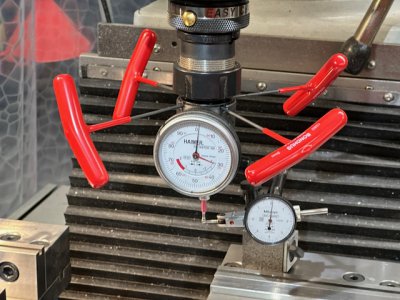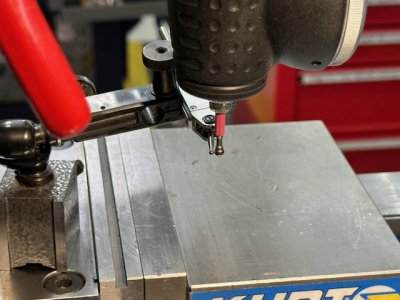- Joined
- Apr 11, 2022
- Messages
- 16
So I decided to go with a new Haimer 3D probe for my PM-728 edge locating duties.
My first use I did not give any thought to the centering and just used it as intended - put it in an ER32 12mm collet, chucked it up and then went about setting zero points in the x & y axis.
Problem is that I found after drilling a few holes that it seemed like my holes were off a bit. Turns out the probe's dial face reads zero at 12 o'clock and 6 o'clock like its supposed to but the edge is like 0.02 something off from the actual edge.
I confirmed this "not my true zero offset" via using a 5/16" ground pin in a 5/16" ER32 collet and low and behold the Haimer is not setting zero like it should.
I measured the ball and its the correct size per the instruction sheet. The short probe is the factory probe and I even have the long probe and that ball is the correct size.
Am I doing something wrong or is the Haimer 3D probe damaged in some way?
No way am I dropping the kind of cash you shell out for a Haimer to have this happen. The gauge is pristine - no damage and used like 3 times until I noticed the error.
Thoughts?
My first use I did not give any thought to the centering and just used it as intended - put it in an ER32 12mm collet, chucked it up and then went about setting zero points in the x & y axis.
Problem is that I found after drilling a few holes that it seemed like my holes were off a bit. Turns out the probe's dial face reads zero at 12 o'clock and 6 o'clock like its supposed to but the edge is like 0.02 something off from the actual edge.
I confirmed this "not my true zero offset" via using a 5/16" ground pin in a 5/16" ER32 collet and low and behold the Haimer is not setting zero like it should.
I measured the ball and its the correct size per the instruction sheet. The short probe is the factory probe and I even have the long probe and that ball is the correct size.
Am I doing something wrong or is the Haimer 3D probe damaged in some way?
No way am I dropping the kind of cash you shell out for a Haimer to have this happen. The gauge is pristine - no damage and used like 3 times until I noticed the error.
Thoughts?





